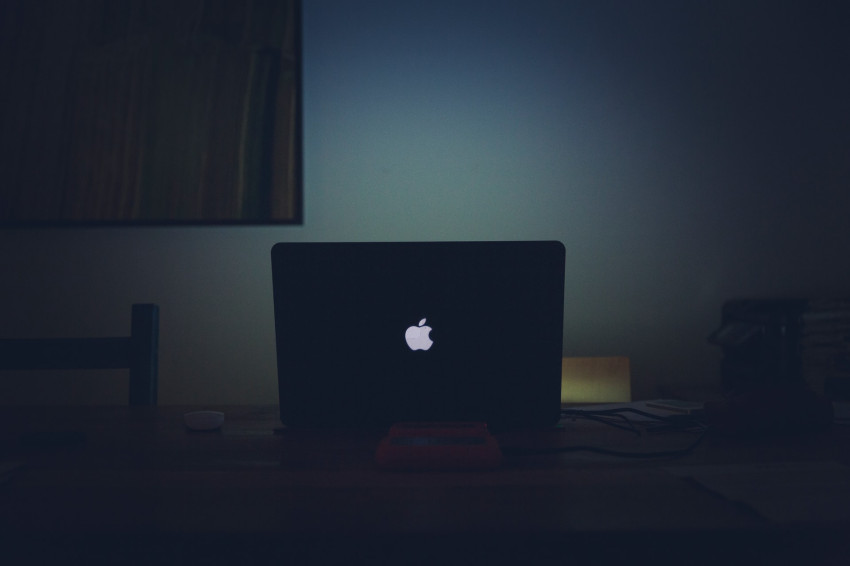How screen time affects your day, and how to reduce your blue light exposure

Rich Groves
26th November 2020

Nearly every business has had to rapidly adapt to accommodate working from home, and it has its benefits; the commute is certainly shorter for one. But the very nature of working from home means the workforce of Britain is constantly looking at a screen. Face-to-face meetings are now via online apps, water-cooler talk is confined to messaging services and collaboration is facilitated online. That’s a lot of screen time. Here’s why it’s important to restrict that time, and encourage employees to do that same.
First of all, a little science lesson. The human body is very sensitive to external factors, with one of the biggest influences being light. Before artificial light was introduced, humans were dependant on the sun dictating our natural body clock, for thousands of years we pretty much went to sleep as soon as it got dark. It turns out though, according to Harvard, that all of this evening light is seriously affecting our ability to sleep, which may contribute to diabetes, heart disease and obesity. Geez, thanks a lot, Edison.
However, blue light itself is pretty beneficial during the day, boosting attention, reaction times and even mood. The problem arises due to the screens we stare at for most of the day - they produce a lot of blue light, which can cause severe eye-strain and completely ruin our natural sleeping rhythm. This leads to headaches, reduced energy and general fatigue.
Without the natural breaks an office environment provides, here’s some ways to reduce your screen time at home.
Go analogue
It may seem counter-intuitive, but the advent of smartphones and digital tech has allowed immense strides in convenience and affordability. A tiny device acts as a camera, holds thousands of books, the entire back catalogue of music in existence and some people even use it to make calls. Of course, on the whole tech has enriched our lives. But our brains aren’t built to consume screens 16 hours a day. Some tasks are unavoidably digital, but that makes it all the more important to do the ones that aren’t, unplugged. Choose pages over kindles, draft with a pen and paper instead of Word, talk instead of e-mail.
Being at home also leaves lots of space for distraction, especially from our little black rectangles of endless information. Deleting social media apps is a huge step in gaining back some of that control. If required to logon through a browser, it’s amazing how quickly you become aware of how often you’re logging into a bottomless feed of irrelevance.
Just use a screen only when it’s necessary, not out of habit.
Have a break, have a chit-chat
Working from home has resulted in the line being further blurred between the personal and the job. Taking a proper lunch break can act as a soft reset in the middle of the day, re-energising your brain and allowing to make the most of being at home. Take the dog for a walk, read a chapter of a book or simply talk to the people around you. Sitting at a desk all day isn’t very beneficial to our physical wellbeing. Get moving. It doesn’t have to be a full workout over your lunch hour, a simple stretch of the shoulders and wander around the house for 5 minutes gets the blood flowing.
Blue light filtering glasses
There are times though where looking at a screen is going to be unavoidable. So for the times your eyes are going to be darting around a bright backlit screen, consider some specially designed spectacles. A pair of blue-light filtering glasses can mitigate eye-strain, headaches and general melatonin suppression. Unfortunately, the most effective pairs have bright yellow lenses, which aren’t exactly inconspicuous. Sure, you might look a bit like a knock-off Ali G, but at least you’re protecting your eyes, aiiigght?
For the fashion conscious among you, or those of you who already wear a pair of prescription glasses, it’s possible to stop the blue-light straight from the source. Anti-blue light screen protectors for laptops and monitors stick straight onto the screen. This is a great option if only one screen is in constant use, and your workstation doesn’t look like NASA’s control center.
There are a plethora of other tips and tricks to reducing screen time at home, but setting the example to employees and colleagues is always the best course of action. Blue-light sources are only becoming more prevalent throughout our lives, as is working from home, and it’s imperative that businesses acknowledge the relationship, and affect, of the two.
